Patient-protecting shields
help target radiation dose
Not all cancers reside deep inside the body.
So when patients have cancers close to the surface, such as tumors of the head and neck or anal cancers, radiation oncologists have to use synthetic materials that add thickness to the treatment areas to increase accuracy of the dose and reduce the dose to tissues beyond the depth of the tumor. But commercial products, sheets of thin, plastic “skin” used for this purpose, are not conformal to the patient’s actual anatomy. Gaps between the patient and the material can reduce treatment accuracy.
To solve the problem, UC Davis Department of Biomedical Engineering scientists, working with oncologists and physicists in the UC Davis Department of Radiation Oncology, developed a way to use 3D software and printing technology to create what are called boluses that conform precisely to the patient’s treatment area.
The process begins with a CT or MRI scan of the patient’s head, neck or other area to be treated. The image is used to trace out the shape of the treatment area and plan the shape of the bolus. That information is sent to a development engineer in Biomedical Engineering, who feeds it into a computer program that converts the traced shape into a 3D rendering. A 3D printer reconstructs the information in physical space, and over the course of 7–10 hours creates the rubbery polymer bolus that can conform to the body.
Sources: Julian Perks, associate professor in the UC Davis Department of Radiation Oncology and Steven Lucero, TEAM laboratory manager in the UC Davis Department of Biomedical Engineering
-
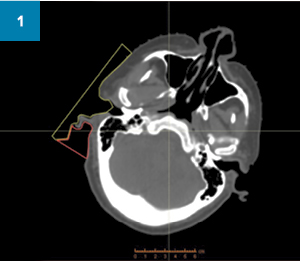
CT scan of the patient’s head, overlaid with outlines of the boluses to be created -
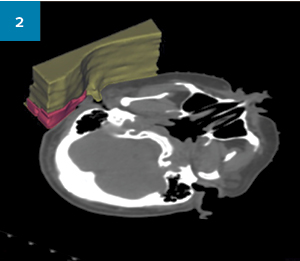
CT scan with 3D depiction of the boluses -
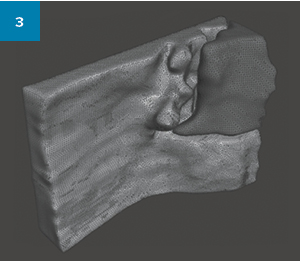
3D rendering of the bolus to be created using the 3D printer -
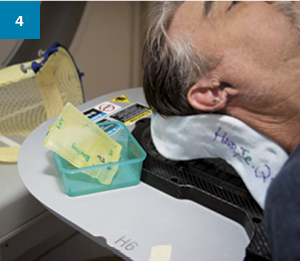
Patient Jess Harling Jr., who has cancer in his ear, is prepped for radiation treatment -
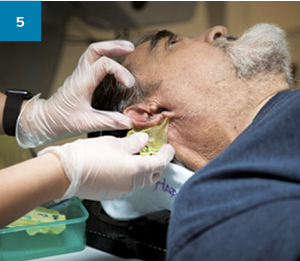
First 3D bolus fits behind the ear lobe -

Second bolus fits over the ear and surrounding tissue; a small portion fits into the ear canal -
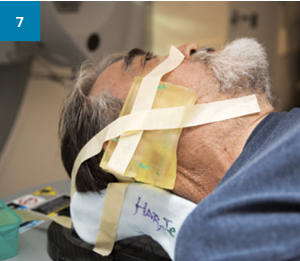
The bolus pieces are secured with tape -
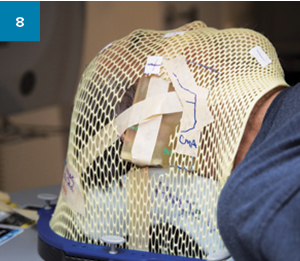
Custom thermoplastic mask steadies the head -
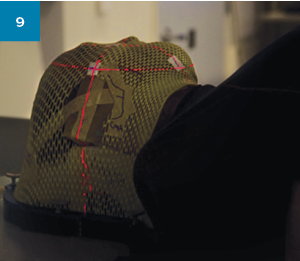
The patient is aligned with the center of the treatment beam with lasers -
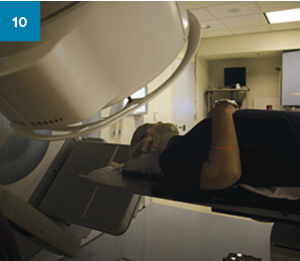
The linear accelerator is angled to deliver treatment -

The green light projects from inside the linear accelerator to define the treatment area
